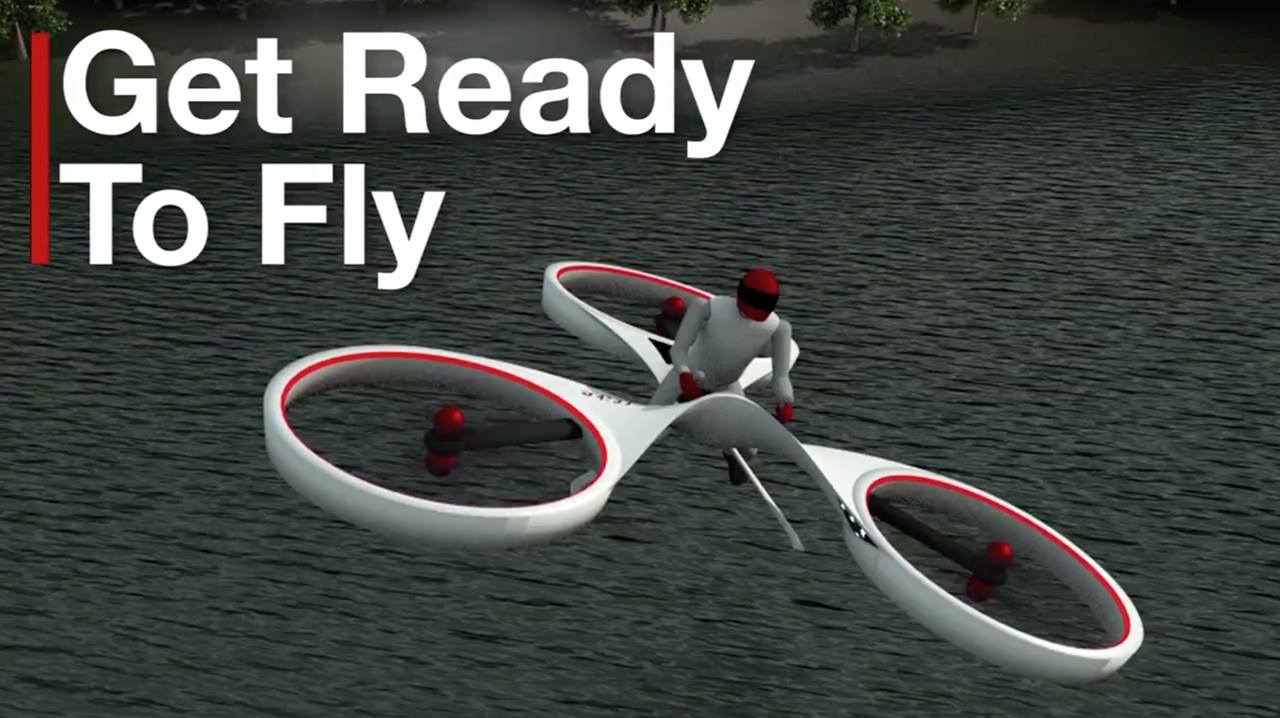Is this the ultimate flying bike? A Hungarian company hopes to sell this flying device as soon as sometime this year.
More of our innovation stories: http://cnnmon.ie/1KQJYCZ

Is this the ultimate flying bike? A Hungarian company hopes to sell this flying device as soon as sometime this year.
More of our innovation stories: http://cnnmon.ie/1KQJYCZ

Our first look at Samsung’s new Galaxy S7 with a bigger battery, better camera — and waterproofing.
An article for the “Dooms Day” fans.
An asteroid roughly 100 feet long and moving at more than 34,000 mph is scheduled to make a close pass by Earth in two weeks.
But don’t worry, scientists say. It has no chance of hitting us, and may instead help draw public attention to growing efforts at tracking the thousands of asteroids zooming around space that could one day wipe out a city — or worse — if they ever hit our planet.
TAQNIA and KACST signed an agreement on February 21, 2016, to form a joint venture that will be responsible for developing six or more sub-meter resolution imaging satellites.
KACST will construct, integrate, and launch the satellites, and it will own 50% of the satellites’ imaging capacity inside of KACST’s communication cone, which includes Saudi Arabia and the surrounding region. And, DigitalGlobe will have rights to the other 50% of the capacity inside this region and 100% of the satellites’ capacity outside of the region.
WESTMINSTER, Colo.–(BUSINESS WIRE)– DigitalGlobe, Inc. (NYSE: DGI), the global leader in earth imagery and information about our changing planet, today announced the formation of a joint venture with TAQNIA, a firm dedicated to accelerating technology development for the Kingdom of Saudi Arabia, in partnership with KACST to develop a constellation of highly capable small imaging satellites to support the needs of customers around the world.
Scientists have redefined the classification of animals due to genetics; 1st time in 300 years. I wonder how the Vets and the Vet Colleges will respond?
The classification system for animals has been hotly debated and frequently changed since it was created 300 years ago, but now researchers have actually found a genetic basis which confirms that part of the system we use today is actually pretty accurate—and they think this part can be defined even more specifically down to the genetic level.
An international team led by Professor Itai YanaAi of the Technion-Israel Institute of Technology Department of Biology made the discovery after using an extraordinarily powerful technique known as CEL-Seq. CEL-Seq monitors individual cells for their gene activity (as detected via mRNA)—and they applied it across 10 different species, with CEL-Seq being applied to 70 embryos per species.
Continue reading “Scientists redefine animal classification system; Change confirmed” »
This story reminds me of the building of ancient pyramids in Egypt as well as the building of ancient temples and cities in Mexico and India.
China has relocated 9K people to build their new giant telescope — in 2000 years from now the robots and Ray Kurzweil (who plans never to die) will be looking at the ancient telescope. And, Ray (the grand earth historian) can tell them all about the process and the reason why it was built.
 The Chinese government plans to relocate some 9,000 people to make space for the world’s largest radio telescope. Photo: ChinaPhotoPress.
The Chinese government plans to relocate some 9,000 people to make space for the world’s largest radio telescope. Photo: ChinaPhotoPress.
Continue reading “China relocating thousands to build record-size telescope” »
Does the connected self driving car, mean a connected work car as well?
SAN FRANCISCO — In the balancing act between business and pleasure, the modern connected car is mostly about pleasure. Drivers can easily stream music from the Internet and dictate text messages to friends, but staying connected to the office is still cumbersome, as anyone who has tried to join a teleconference while driving can attest.
People tired of checking corporate email around the clock may prefer it that way. After all, a request from the boss can still be reasonably deflected with a simple: “Sorry, I’m driving.”
Continue reading “Challenge for Microsoft: Could we get more work done in our cars? (Should we?)” »
Great progress by Institute of the McGill University Health Centre has study astrocytes (the star shape brain cells) which play fundamental roles in nearly all aspects of brain function, could be adjusted by neurons in response to injury and disease.
A research team, led by the Research Institute of the McGill University Health Centre (RI-MUHC) in Montreal, has broken new ground in our understanding of the complex functioning of the brain. The research, which is published in the current issue of the journal Science, demonstrates that brain cells, known as astrocytes, which play fundamental roles in nearly all aspects of brain function, could be adjusted by neurons in response to injury and disease. The discovery, which shows that the brain has a far greater ability to adapt and respond to changes than previously believed, could have significant implications on epilepsy, movement disorders, and psychiatric and neurodegenerative disease.
Astrocytes are star-shaped cells in our brain that surround brain neurons, and neural circuits, protecting them from injury and enabling them to function properly – in essence, one of their main roles is to ‘baby-sit’ neurons. Our brain contains billions of cells, each of which need to communicate between each other in order to function properly. This communication is highly dependent on the behaviour of astrocytes. Until now, the mechanisms that create and maintain differences among astrocytes, and allow them to fulfill specialized roles, has remained poorly understood.
Continue reading “The brain starts to give up its secrets” »
